Snyder AirDuct Cleaning (1)
The ductwork in your home does an important job. It circulates warm air from your heating system and cool air from your air conditioning system throughout your entire home. If your air ducts are dirty, old, or damaged, you need to clean them or replace them to prevent ventilation problems and protect your family’s health.
Common Types of Residential Duct Work
In most cases, air ducts can be cleaned, but the type of ductwork you have in your home may impact cleaning. Common types of residential ductwork include flexible and rigid systems. Flexible ductwork is typically tube-shaped, made of a wire coil covered with a bendable, durable plastic, and covered by insulation, while rigid ductwork is typically made of galvanized steel or aluminum. Flexible ductwork, found in many older homes, is easy to install in areas where rigid ductwork doesn’t fit, and it is usually less expensive than rigid ductwork. Galvanized steel or aluminum ductwork, found in newer homes, is more expensive to install, but harbors less dirt and bacteria, since it has no interior lining. Both types of ductwork can be cleaned by a qualified, professional HVAC technician.
Common Air Duct Problems
Before you decide whether it’s best to clean or replace your ductwork, you should look at these important factors that may impact your decision:
- Age – In general, ductwork will usually last for 10 to 15 years before it starts to deteriorate. If your ductwork is 15 years old or older, you should have it inspected and consider replacement, rather than cleaning.
- Energy Efficiency – Ducts with air leaks will cause ineffective heating and cooling and energy inefficiency that results in higher energy bills. Your HVAC system will have to run longer and work harder to accommodate for heating and cooling loss.
- Air Flow – If you notice poor air flow or uneven temperatures from one room to another, you should inspect your ductwork for problems. To measure proper air flow, you should schedule a duct blower test with your HVAC technician.
- Air Quality – Old or leaky ductwork can cause poor indoor air quality. Breaks, holes or tears in air ducts can allow dust, pollen, mold, bacteria, allergens, and other pollutants to circulate through your home.
Signs of Dirty Air Ducts
The best way to tell if your ductwork is dirty is to schedule an inspection with your HVAC technician. Many parts of your ductwork may be installed in areas of your home that are difficult to reach without help from a qualified technician. Here are some things that can indicate clogged or dirty air ducts:
- A musty smell when your heat or air conditioning turns on can be a sign of bacteria, mildew or mold growth in your ductwork.
- Dust or pet hair in your vents, or blowing out of your vents, can be a sign of clogged or dirty air ducts.
- Noisy airflow or whistling sounds can be a sign of clogged or damaged ductwork. Clogged ducts can cause noisy airflow, while breaks, holes and air leaks can cause whistling sounds.
- Coughing, sneezing or worsening allergies can be a sign of poor indoor air quality caused by defective or dirty ductwork. People with respiratory problems and asthma are especially vulnerable to health problems from dirty airflow.
To keep your heating and air conditioning equipment working properly and efficiently year-round, it’s important to schedule regular maintenance. For HVAC inspections, repairs, and installations, or cleaning and replacement of ductwork in Jacksonville, contact Snyder Air Conditioning, Plumbing & Electric.


